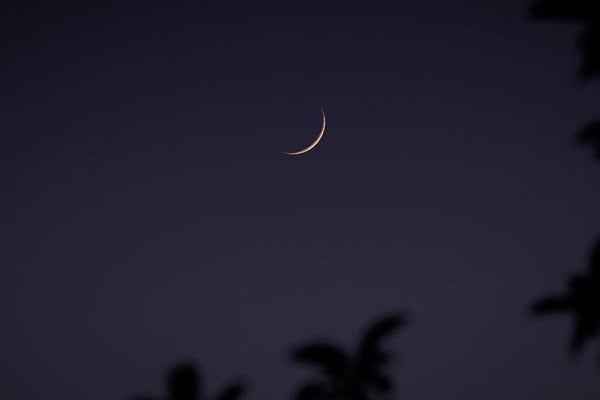Heard of Heisenberg’s uncertainty principle? It says the more certain we are of a quantum particle’s position, the less certain we are of its velocity, and vice versa. While that deals solely with the quantum world, “Steve’s uncertainty principle” deals with the threshold of visual observations in the macroscopic world. Unlike the Heisenberg uncertainty principle, however, Steve’s is something I just made up.
The impetus to create Steve’s uncertainty principle came from two sources. The first was an observer who was curious why I don’t use percentages to describe how certain I am in published observations — as in, “I’m 75 percent sure I saw something.” The second was an observer who was more than 50 percent confident of sighting a dim object after receiving one decent photon hit, but was nervous to report it. (Experiments show that the human vision system can detect a single photon, though the brain tends to filter out a single hit if not primed by earlier photons.) As both cases concern degrees of visual uncertainty, let me share some personal thoughts, which have helped me sleep well at night.
A principled approach
Steve’s uncertainty principle states that any visual threshold observation (that is, on the single photon level) remains uncertain until a 100 percent confidence level is achieved. In this principle, then, three levels of confidence exist: 1) I see it (100 percent); 2) I don’t see it (0 percent); 3) I’m uncertain, but will likely try again later until I either succeed or fail. If I’m uncertain of an observation, I generally do not report it — unless I want to encourage others to join in the challenge, which can enhance the fun.
Intermediate percentages are not part of this principle because the result is always the same: uncertainty. The way I see it, visual threshold observations either provide enough photon hits to make an observation certain, or they don’t. How many hits are required to bring about 100 percent certainty? As many as it takes.
An uncertain observation
Here’s an example of an uncertain observation I’ve never published (well, until now). Some years back, an astronomer calculated that if I were to search for the sliver of a hyper-young Moon from the nearly 14,000-foot (4,200 meter) summit of Mauna Kea in Hawaii on a given date, I should be able to see it near the limit of perception. It was an extreme observation — the closeness of the waxing Moon to both the setting Sun and the horizon made it a race against time. Nevertheless, I was up for the challenge.
When the golden moment occurred, try as I might, I could not convince myself that I saw it. Several times I thought I saw a thin sliver of light around the Moon’s predicted position, but the sightings were not enough to make me feel confident. I also noticed dim irregularities in the air, which appeared as hyperfine whiskers of light. Were my fleeting glimpses only enhancements of these minute atmospheric striations? Maybe, maybe not. I couldn’t be sure.
Furthermore, whenever I did catch a momentary suspect, I wasn’t sure if it took the form of an arc. Then again, the super-thin horns of the young Moon might have been too difficult for me to see due to limited contrast. So perhaps I was seeing only the flattest, brightest, portion of the crescent.
Is it possible that I really did see this hyper-thin Moon? Yes, but it’s also possible I didn’t. In the end, I told the astronomer, “No, I didn’t see it.” I provided no percentage of certainty. But it was a learning experience, and I may try to repeat the observation in the future. Uncertain observations on particular nights do not negate the chances of certain observations on other nights.
I encourage you to apply my principle to your own observations. Repeated attempts at observing a difficult object may just be the key to helping you decide whether or not you can see it — so you can go to sleep feeling confident about your decision.
As always, send your certain, or uncertain, observations to me at sjomeara31@gmail.com.










